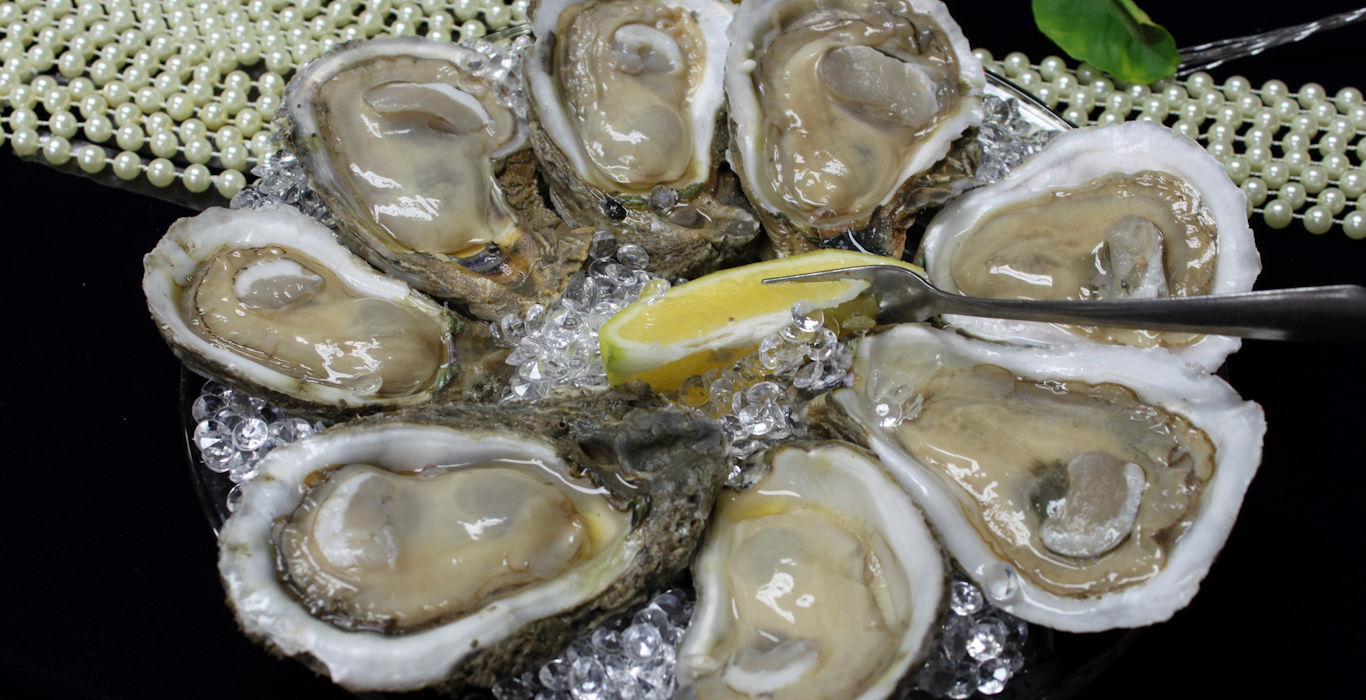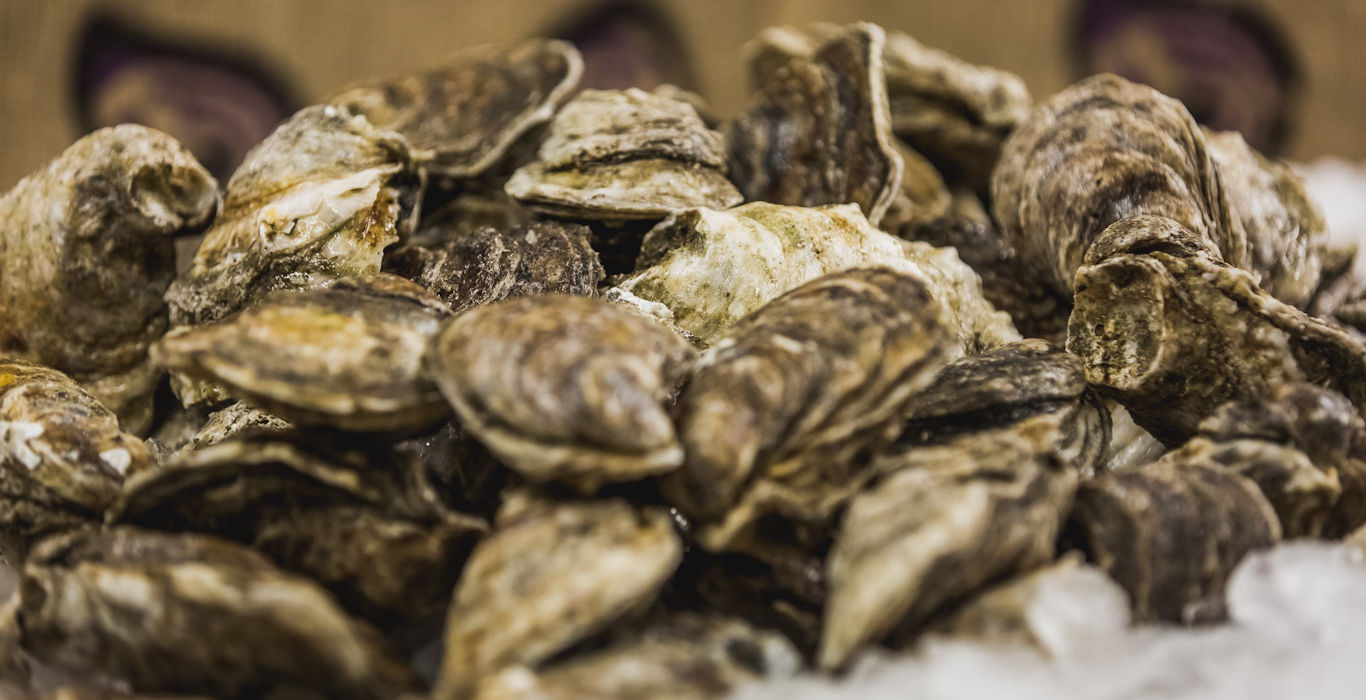Lets take a moment to talk about Oysters!
“Our Oysters are from the brackish saltwater of the Texas bays, that deep cut holds the wild caught salt liquor, the flavor that seeps into your veins.”
Oysters are one type of bivalve mollusks that are eaten by cultures throughout the world. There are multiple varieties of oysters, some of which primarily create pearls; these are not typically consumed by people, but the variety of oysters bearing the scientific family name of Ostreidae are eaten as a delicacy. These are also called true oysters, while feathered oysters (those bearing pearls) are in a distant family called Pteriidae. Edible oysters have been a part of the human diet for at least 700 years, but have likely been eaten in raw or cooked forms for much longer. The edible component is the meat inside the oyster, and once the shells have been cracked, you can cook this meat in a variety of ways. They can also be eaten raw and are often preferred in that way. Proceeds from the San Leon Oyster Fest are dedicated to the continuing Enhancement of the public oyster reefs and health of Galveston Bay –The Pearl of the Gulf Coast
Tasting
- The key to a good oyster is freshness. It should smell of the seashore as the tide recedes over seaweed-covered rocks. It should be full in the shell, firm in texture, and brimming with the natural juice that is its life blood (not just sea water); every spare drop of this should be soaked up with bread. The heel of the oyster, in the deep part of the shell, should be a creamy or ivory color. The frill should be moist and pulsating, and the oyster should always look bright. Finally, if the shell isn’t firmly closed it should do so immediately when tapped.Oyster flesh has a wondrous texture and, like any piece of meat, should be chewed. This also releases the full flavor, and the juice from the shell completes the experience. (Some insist on swallowing oysters in one; each to their own.)They can be zipped up with lemon juice, vinegar, seasoning or Tabasco sauce. And, if you’re not keen on raw shellfish, they can be lightly grilled, fried or baked in a little sauce.
What is the taste of oysters?
- Slurp the meat with its “liquor” and give it two or three good chews. Salt or brine hits first–ranging from subtle to bold. Next you might detect a creamy or buttery flavor (of varying intensities) and finally a sweetness.
- Oyster liquor is the natural juice inside the oyster that keeps it alive once it’s out of the water. It is unacceptable to rinse or dump that juice out of the oyster before consuming it raw. That juice is precious and should taste amazing, and that’s why it’s referred to as liquor. It should be clear not cloudy.
- Oyster tasting is similar to wine tasting. You’re trying to absorb and appreciate the nuances in flavor and texture imparted by climatic conditions.
Pro Oyster Tasting
- Feast with your eyes! Study the shell, shape, color.
- SMELL: It should smell sea-breezy and sweet, not fishy at all.SIP: Sip the oyster liquor to get a sense of the salinity.
- SLURP: Shimmy the oyster meat loose, tilt the flat edge of the shell to your lips and slurp! Don’t discard the oyster liquor (faux pas).
- SAVOR: Chew a few times to get the full body taste; notice the progression from nose (salty) to body (sweet/flavors) to finish (lingering aroma).
- SHELL: Flip the shell over and admire the collaboration between nature & farmer. All oysters fluctuate in taste and texture throughout the year. See how your impressions compare with mine!I want an oyster to taste like the ocean, or an ocean bouillon cube
Live for the live-shuck
- If you are going to eat a whole animal that was alive a minute ago, it better be as fresh as can be. You want to know your oysters just came off ice and were shucked specifically for your order; ideally you want to see ‘em shucked, and if you eat them within five minutes of that moment you ALWAYS get a better product.
Make sure they’re cold
- The shell and the meat should be ice cold! If they’re not, don’t eat them. Be discerning at big oyster events –even five minutes off the ice on a paper plate in the warm air is not desired.
San Leon Oyster Secrets on the Half Shell as we aim to shell shock you!
Chargrilled/Charbroiled
- This dish is synonymous with Drago’s, who calls them by a different name than most other establishments. Whatever you want to call them, these flame-grilled, soaked in butter and Parmesan cheese delights keep people coming back for more.
Fried
- Yeah, they may not be 100% healthy, but a properly fried oyster will melt in your mouth and deliver a delicious flavor. Be careful when ordering fried seafood platters … these guys can steal the show.
Raw
- If you’ve never tried one, have your first one naked I won’t even recommend lemon for your first. Any accoutrement will change the flavor profile and make it hard for your palate to know exactly what the oyster tastes like.
Then proceed to the accoutrement
- Otherwise known as sauces and condiments. Experiment whenever you can. Herbs? Spirits? Vegetables? Try ‘em all!
Try a squeeze or two of citrus
- Don’t feel limited to lemon –lime and even grapefruit work just as well. Rumor has it that lemon was originally used on raw oysters as a way to prove that it was shucked live, fresh, and served in its own cup. The acid was supposed to make the still-live animal “quiver,” as more proof it was just shucked for you. Can’t say I’ve actually seen this though
Reconsider cocktail sauce
- Cocktail sauce consists of two items: horseradish and ketchup. Horseradish is great, but ketchup has no business on an oyster. This tradition began as a way to mask the scent and taste of rancid, unrefrigerated, and unregulated oysters. Would you put ketchup on any other fresh seafood?
Look for light, bright flavors
- avoid the sweet stuff. Tart and dry wines go best with the natural brine, and Blue Point beer is a personal favorite, as they also support oyster cultivation and make a damn fine Oysters Stouts. Generally pair well with oysters.
Help aquaculture & coastal restoration, preservation & protection with your drink choice
- Finlandia vodka, for example, has spent a great deal of time, money, and energy supporting oyster restoration and habitat preservation. Oyster, an award winning Sauvignon Blanc (a great varietal for oysters) even donates money from every bottle they sell to oyster restoration projects





